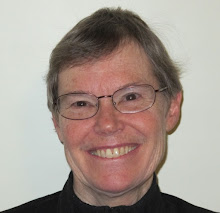Here is a copy of what I wrote in a 2009 piece about some memories at Locust Lawn:
Remembering Danvers
5/4/09
Locust Lawn - more memories
By Sandy Nichols Ward
The Locust Lawn property, as I knew it in my childhood, was 35 acres of woods and pastureland along the east side of Nichols Street. The highest point was on top of "Dale's Hill" or "Nichols' Hill" along a stonewall marking the northern boundary of this family property. My father liked to point out a tall tree there and tell stories of climbing up for a good view of Salem Harbor. I saw remains of weathered wooden slats nailed high onto the tree truck as a climbing aid, but the lower ones were missing. I never climbed to experience that view. I did climb many other trees, especially smaller ones and those knocked partly over by storms. My sister Jean and friends Janet, Ray, and Gordon often played there with me, bouncing up and down on the bushy branches of hurricane-felled trees, or exploring around the old buildings and foundations.
The huge barn, with the date 1856 visible above the main doors, remained intact for years and provided hours of fun. Underneath the barn was a surrey with fringe on top, and an old carriage we could bounce in. On the first floor wonderful wooden horse stalls allowed us to play horse (inside the stalls) or horseback riders (sitting astride the high wooden walls, using leather reins we found nearby). On Halloween my father transformed that barn into a maze of mysteries, with different horrors in each stall. Upstairs was a huge space for parties; I recall dunking for apples and playing "Red light, green light" with friends. An antique hand-pulled fire wagon carried a long roll of heavy white hose -- too heavy for us to maneuver, though of course we tried.
The former Locust Lawn mansion had been torn down in 1944, but large granite blocks of its foundation stood tall throughout my childhood in the 1950's, providing a setting for games of hide-and-seek, cowboys-and-Indians, pirates, and so forth. We also liked to excavate "treasures" from the piles of old plaster and debris. Fragments of fancy china, an old watering can, and interesting bricks with decorative edges could be found as we climbed up and down the mounds of white plaster and building rubble.
There was beauty, too, at this abandoned site. Snowdrops and other flowers bloomed each spring along the south wall of the foundation. It was lovely to sit there in the warm sun, leaning against a granite block and gazing out over the landscape to the south, the long sloping lawn with grand elm trees and bunches of locust trees. Locust Lawn was a place of freedom and adventure. We played on the "dinosaurs" or "dragons" (trunks of fallen trees bleached white in the sun). We pretended to be cows in the pasture, and when the real cows weren't looking, we licked their salt licks, those big blue or pink cubes the farmer set out in the field. My mother was disgusted at this idea, but we claimed to always lick on the "other side" where cows hadn't licked!
One summer the foundation provided a "job" and spending money for me and friends. My parents planned to build a new house on the site, which they were buying from the great aunts, and my mother wanted to use old-style bricks for the new fireplace. She paid us "a penny a brick" to dig out old bricks. My friend Ann O'Connor and I worked hard in the hot sun and stacked up an impressive pile of salvaged bricks. I was paid $4.00 for my neat stack of 400 bricks! The new house built in 1957 was a large Colonial, but not large enough to cover all the old site. My father preserved one end of the foundation with a nice granite stairway, hoping to create a swimming pool, if only he could figure out how to water-proof the walls and floor. Instead, my mother created a lovely sunken garden, which she enjoyed for years. Even on a cold winter day she could sit down there out of the winds, reading her newspaper in the protected, sunny "rockery" or garden. Many happy memories!
Last summer [2008] I drove back to Danvers to examine what might be left of this house and rock garden. Gone! Nothing left but a slight depression in the ground with a few old bricks sticking out among clumps of daisies and other wildflowers. What a rush of nostalgia! Truth to tell, I'm more nostalgic for that old site (its bricks and flowers) than for the new house I'd live in as a teenager.

.jpeg)